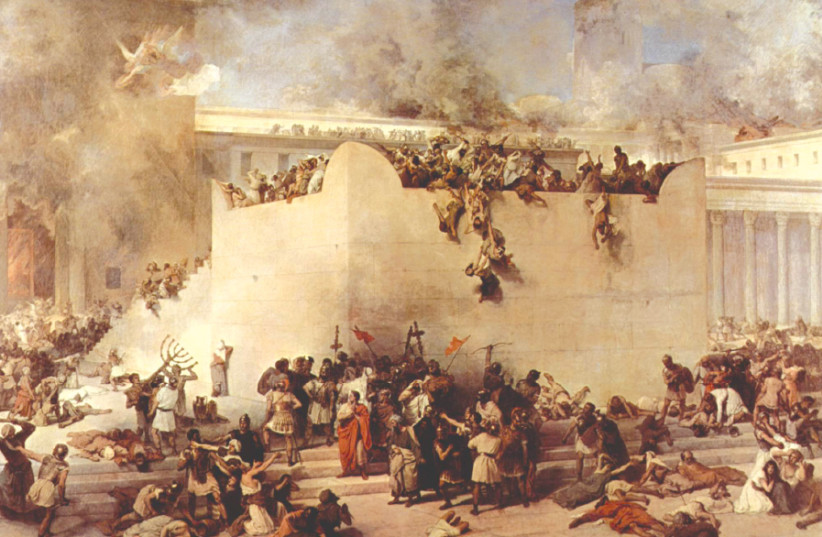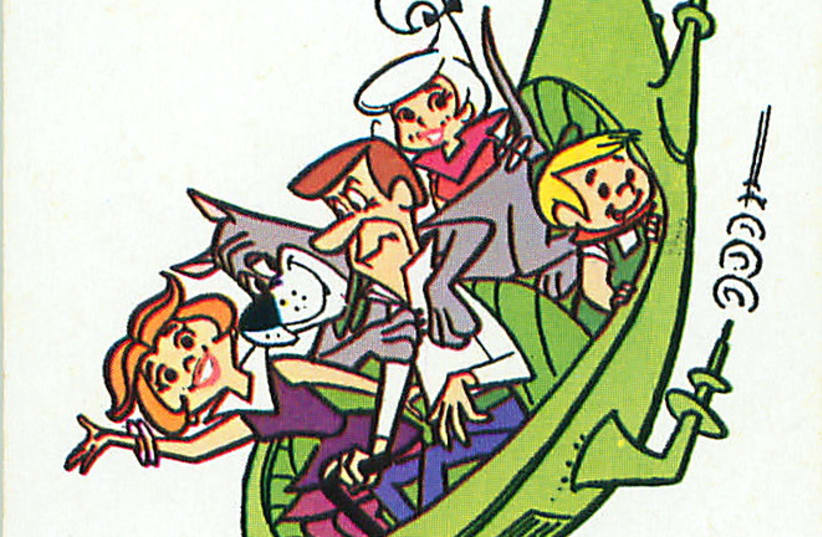I recently saw a meme pop up on my Facebook feed a few times. It shows a picture of the airplane flown by the Wright brothers at Kitty Hawk and another picture of a man on the moon and makes the rather remarkable point that only 66 years separate those two photos. It made me immediately think about that famous picture of the liquidation of the Warsaw Ghetto; you know, the one where the boy is raising his hands in terror while the SS officer points a machine gun at him.
It is far more remarkable to me that less than 25 years separate between that photograph and David Rubinger’s photo of the soldiers liberating the Western Wall in the Six Day War. (By the way, that SS officer, identified as Josef Blosche, would live to see both Jerusalem liberated and a man walk on the moon! Blosche was only executed for his crimes on July 29, 1969.)
I share this with you because this Shabbat marks the 1,952nd year since the destruction of the Temple on the 9th of Av in the year 70 CE. (Because of the sanctity of the Sabbath, there is no mourning on that day and all observances and commemorations of that catastrophe are pushed off till the next day.) If you think about it, there are less than 50 generations separating us from Jerusalem’s destruction. This is but a blink in the eye of human history.
We live in a generation of incredible fast-paced change.
Did you know that according to “the Internet” (and we all know everything written there is true) George Jetson was born this week on July 31, 2022? The world of the future depicted in the cartoon show, The Jetsons, is the world we already inhabit even though it is set 40 years from now.
These changes are happening so swiftly that it is difficult to navigate them and adjust the scripts of our lives to accommodate those changes. The return to the Land of Israel and Jewish Sovereignty is one such change, and it is really hard to understand how to fit Israel into our lives as Jews. So much of Judaism as we know it today was forged in the Exile and in response to the harsh conditions of Exile that it makes incorporating Israel a very difficult task.


Does the return of the Jews to the Land of Israel mean we are in the messianic age? On the one hand the messianic age had always been defined by that return, on the other hand, we are not yet beating any swords in plough shares.
Keep in mind that the actual return to Zion has been beyond anyone’s imagination. We are stronger and more powerful militarily and economically than most countries in the world. Israel is flourishing in ways unimaginable even 25 years ago! Had Israel been established as some third world country where kids played kick-the-can in the streets while raw sewage flowed beside them, one could still point to Israel as the fulfillment of biblical prophecy. And yet, while we are so beyond that, we still have not had any real change in Jewish practice.
BUT IS that, perhaps, a good thing?
I get that there is a real disconnect in praying for the restoration of Israel while standing in the Knesset. I also get that mourning for the Temple’s destruction in modern Jerusalem seems incongruous and yet I feel privileged to do so.
As history does change, these rituals help anchor us to our past which in turn gives us a compass for the future. One of the most important missions we have as Jews is to prevent ourselves from becoming unrecognizable to our future selves. That does not mean we cannot change but that change must be evolutionary and not revolutionary. Thomas Jefferson would have been startled to have seen a black man sitting in his seat in the White House, consulting a female member of his cabinet, but if we were to explain to him that we have now expanded his words that “all men are created equal” to include every human being, I think he would be very happy.
The Talmud imagines Moses magically transported to the classroom of Rabbi Akiva 1,000 years in the future and Moses cannot follow the lecture. He is growing frustrated until a student raises his hand and asks as to the source of a particular teaching to which Rabbi Akiva replies that it was a tradition handed to Moses at Sinai. At that point, Moses breathed a sigh of relief when he realized that what Rabbi Akiva was teaching was the evolution of the very same Torah taught by Moses.
It is our ties to the past that allow us to move forward and we can do so with confidence because of how firmly connected we are to what came before us. I think this is one of the hallmarks of Orthodoxy as well. If Rabbi Akiva would be transported to our time, I have no doubt that the synagogue, study hall, and home he would feel most comfortable in would be Orthodox. Yes, he too would be taken aback by some of our practices, but we would be able to open the Talmud together and trace the interpretation and observances through the development of Halacha through the millennia.
This Tisha Be’Av, we mourn, not because of our situation today but because we tie ourselves to the past and see ourselves as a link to it; but, more importantly, we also see ourselves as a link to the future. Our acceptance of the Torah in our day is really only a responsibility to give it over to the next generation. We mourn, not just for a distant past but to remain true to ourselves and our progeny. ■
The writer holds a doctorate in Jewish philosophy and teaches in post-high-school yeshivot and midrashot in Jerusalem.
